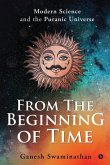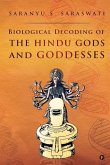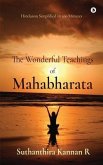'Singing God' is my fourth book in English and third in Poetic enunciation. The theme of this book is taken from the ancient literature named "Geet Govinda" composed by the famous poet of India named Jayadev. It is believed that the songs composed in this books were recited in the Royal Courts of India since its period of composition during twelfth century and even Chaitanya Mahanpravu would sing some of the texts of it in deep devotional sentiment. I got to read an article during 1980 where it was written that the poet got lord Krishna's presence while writing one of the stanzas of his work, which he was in a dilemma about and because of this the book became famous. I tried to find a copy of the book then and read. Upon completion of the reading I found myself into a dilemma as to how could a poet with the highest level of devotional temperament write about the romance in an open expression presenting his actors and actress to Lord Krishna and his childhood companion Rädhä as the teenaged youth of about sixteen to eighteen and a blonde of about seventeen - nineteen? They were in reality Lord Krishna only at the age of eleven and Rädhä about thirteen or fourteen at the time of separation from their childhood companionship when Lord Krishna was at Braja. But their romance presented in some places in the book is no less than the poetic imagination of any modern erotic literature about the physical relationships of two fully bloomed hearts of the opposite sex. How could such a literature got acceptance and welcomed in the Royal Courts of that conservative society of Hindu customs of Bengal in India and also by the philosophers and devotees like Chaitanya Mahaprabhu ? Even now, it is being recited some stanzas of it at the Royal Court of Nepal during the fifth day of starting spring season, the day named as Vasanta Panchami. It is possible, that the poet had attained unison with the God already and as such, could express the feeling of physical love he had experienced in his life and blamed it to the God himself in the lord Krishna's form as the impeller of every activity of the world by himself upon the living being. But I could not make myself fully convinced for sometime and read the book several times to find the sense to accept myself by heart. I also discussed the matter with some religious persons of high intellect. I got convinced at last that the book was giving metaphoric expression in its text. It was symbolizing the systems of impulse imposed into the divine composition of the natural creations, which was expressed by the indication of physical attractions of two bloomed hearts in the form of Rädhä and Krishna, which in fact had happened only as the companions of early childhood without any physical attraction about the love of two souls seeking reunion. It is believed that the creator in the beginning broke the soul into two parts and made one as male-body and the other as female-body to give continuation to the creative process. It is also believed that the souls work as a spark of the original source the Supreme Spirit and as such it always feels attracted towards the origin as and when knows about the separation. Lord Krishna representing the Supreme Soul is being presented by the poet in the book "Geet Govinda" in the Sanskrit text that Rädhä represents the soul of the human being with the intense desire and conscience of reunion from the separation of bodily bondage. Thus, the book gives a rhetorical metaphor towards the highest level of spiritual attainments indicated by the physical attractions of two youthful hearts of opposite sexes. To give a heart-touching feeling bringing changes in one's thinking, it is not enough just by some diction of precepts to guide towards the Absolute truth. But a carefully composed story-type play or a literature giving long poetic eloquence can certainly bring changes to a person toward the hidden truth of the life in long run.
Hinweis: Dieser Artikel kann nur an eine deutsche Lieferadresse ausgeliefert werden.
Hinweis: Dieser Artikel kann nur an eine deutsche Lieferadresse ausgeliefert werden.








